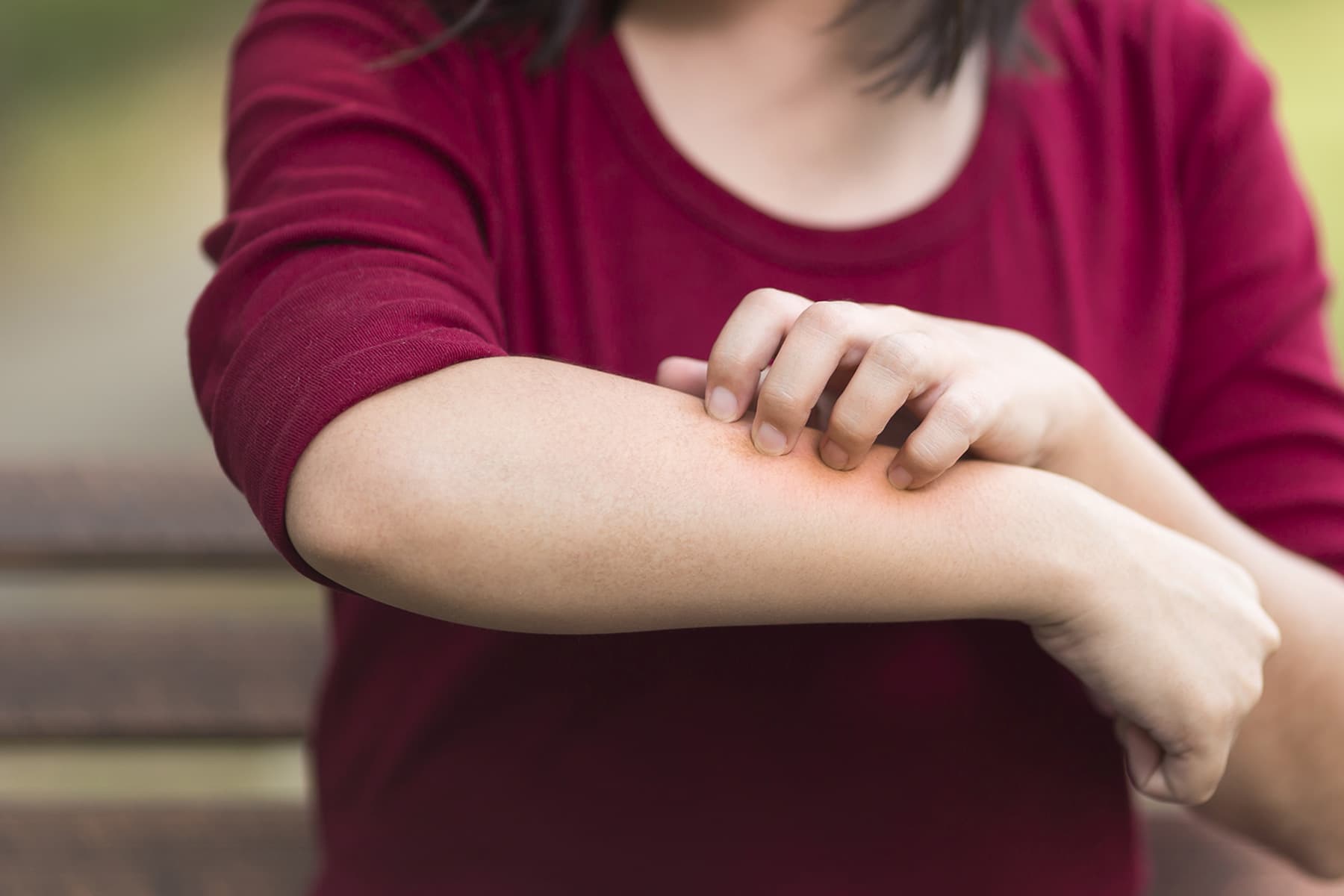By Jamie Hickey, as told to Kara Mayer Robinson
I’ve had atopic dermatitis (AD) as long as I can remember. The first time a doctor gave me a diagnosis was when I was 18 years old and in the Marines.
Having AD used to affect my mood a lot. When I was younger and more insecure, I wouldn’t wear short sleeves if I was having a flare-up. I hardly ever wore shorts. At the pool, I wouldn’t take my shirt off. I’d even cancel plans with friends.
Now that I’m in my 40s, I’ve gotten past all that. I care less about what people think. Now, when I choose what to wear, it’s based on how comfortable it is. My AD doesn’t really change my mood unless I’m having an episode that I can’t get under control and the itching is nonstop.
It’s taken some trial and error, but I’ve gotten better at managing my daily life with AD.
Daily Rituals
On a typical morning, I wake up and take a cool shower. I avoid hot showers because they increase inflammation, which makes my AD worse. Then I moisturize my body, focusing mostly on my arms and legs.
I make sure to drink a gallon of water every day. I’ve found that if I’m dehydrated, I get dry skin, which can make my eczema flare up.
When I leave the house, especially in the summer, I’ll take a bottle of lotion, itch cream, hydrocortisone cream, and allergy pills with me. It’s good to have them on hand in case I need them when I’m out.
I find that my AD gets worse in the spring. Pollen has a really negative effect on me and my AD, so springtime can sometimes feel miserable.
Treatment: Trial and Error
My AD mostly shows up behind my knees and on my arms, especially my elbows. But in the past few years, it’s started to show itself in my eyebrows. Heat, stress, and spring allergies cause it to flare more than other times of the year.
Continued
I’ve tried a lot of treatments and remedies. I’ve tried medical-grade lotions, oatmeal baths, oral allergy medication, anti-itch medication, warm baths, and mild soaps. I’ve even tried some late-night infomercial remedies, which never work.
I found that what works best for me, besides changing my diet, is hydrocortisone steroid cream. It reduces the inflammation, which eases the itching and allows it to heal faster. I use the steroid creams when I get a flare-up, and then I apply it twice a day for a few days.
When I’m about to get a flare-up, it’ll start to itch, and then my skin will become red and inflamed. I’ll put the steroid cream on and wait to see how bad it gets. If it doesn’t go away after 7 days, I’ll have to see my dermatologist to get a stronger ointment.
I owe a lot to changes I made to my diet. When I was in my late 20s, a friend and I made a bet to see who could lose the most weight. I started eating healthier and stopped drinking alcohol, and I noticed that my flare-ups and everyday rashes decreased. So I made the connection and never went back to my old habits.
I no longer drink alcohol. I don’t eat processed or greasy foods. These changes have helped more than any other treatment has, especially not drinking alcohol and eating a whole-foods diet.
(If you were wondering, I did win the bet.)
I’ve also stopped using things that cause flare-ups, and I’ve found a few tricks that make it easier. I shaved my head years ago because it kept me cooler, and I figured out that certain types of shampoo and conditioner would make AD flare up on my eyebrows.
Now that I know what I’m doing, my flare-ups are less severe. I think knowing your triggers and avoiding them makes a big difference. For me, it’s heat, dehydration, greasy or processed foods, alcohol, and spring allergies.
Continued
Getting Over the Hurdles
My biggest hurdle is being disciplined when it comes to my diet. If I have one day where I let myself eat greasy or processed foods, it can take me weeks to get my skin back to normal. I’ve become much better at staying on track as I’ve gotten older.
Stress is another hurdle. It definitely plays a role in my flare-ups. I’ve had to learn how to manage my stress and anxiety to keep it under control. My doctor prescribed a mood stabilizer to control my anxiety problems. And as I’ve gotten older, I’ve learned to always do what’s best for me and my family over anything else, which makes my worries and anxiety very low.
Every day is different, but it’s been a learning experience. Now I can say I’ve figured out how to live well with AD.

